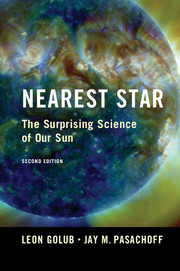4 - What We Don't See
Published online by Cambridge University Press: 05 February 2014
Summary
From the evidence brought to light by research in archaeoastronomy, it seems that humans have been constructing instruments to supplement their sensory equipment for many thousands of years. Stone markers, crude sighting devices, and methods for keeping track of monthly and seasonal events were in common use worldwide. The culmination of these naked-eye observations was Tycho Brahe's Uraniborg Observatory – located on an island near Elsinore castle in Denmark – that obtained planetary orbit determinations near the end of the 16th century so accurate that Kepler was finally able to figure out the true shape (elliptical) of the planetary orbits.
But it was Galileo's use of the telescope a few years later that brought home in dramatic fashion the realization that there are strange and wonderful phenomena in the heavens that we cannot see with the naked eye. The phases of Venus, craters on the Moon, moons circling the planet Jupiter, and details of sunspots on the face of the Sun were among the new discoveries revealed by this instrumental extension of the human apparatus.
We have been constructing bigger and better telescopes ever since, continuing right up to the present day. But we have also discovered that restricting our attention to the wavelengths that our eyes can detect is a major limitation. Astronomical objects in general, and the Sun in particular, look markedly different at radio, infrared, visible, ultraviolet, and x-ray wavelengths. By exploring those differences we can begin to understand what it means for the Sun or a star to look so different in x-rays or radio than in visible light.
- Type
- Chapter
- Information
- Nearest StarThe Surprising Science of our Sun, pp. 106 - 127Publisher: Cambridge University PressPrint publication year: 2014



